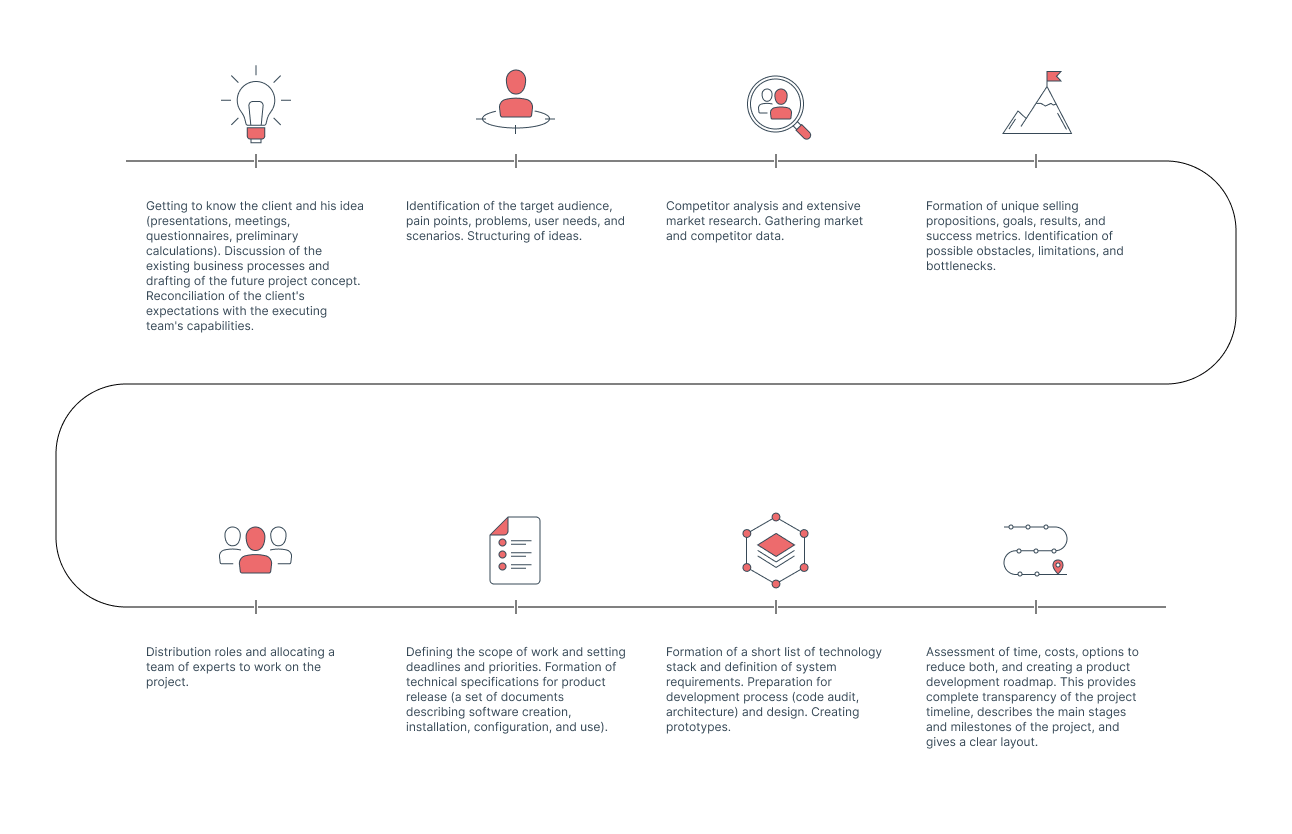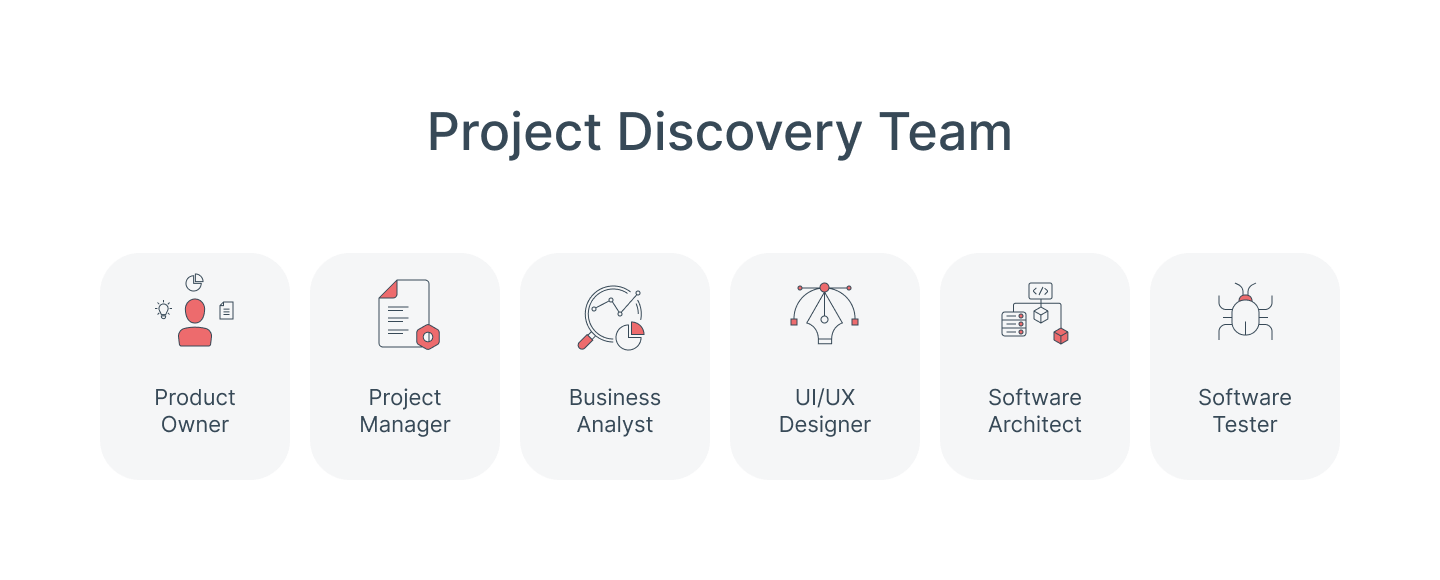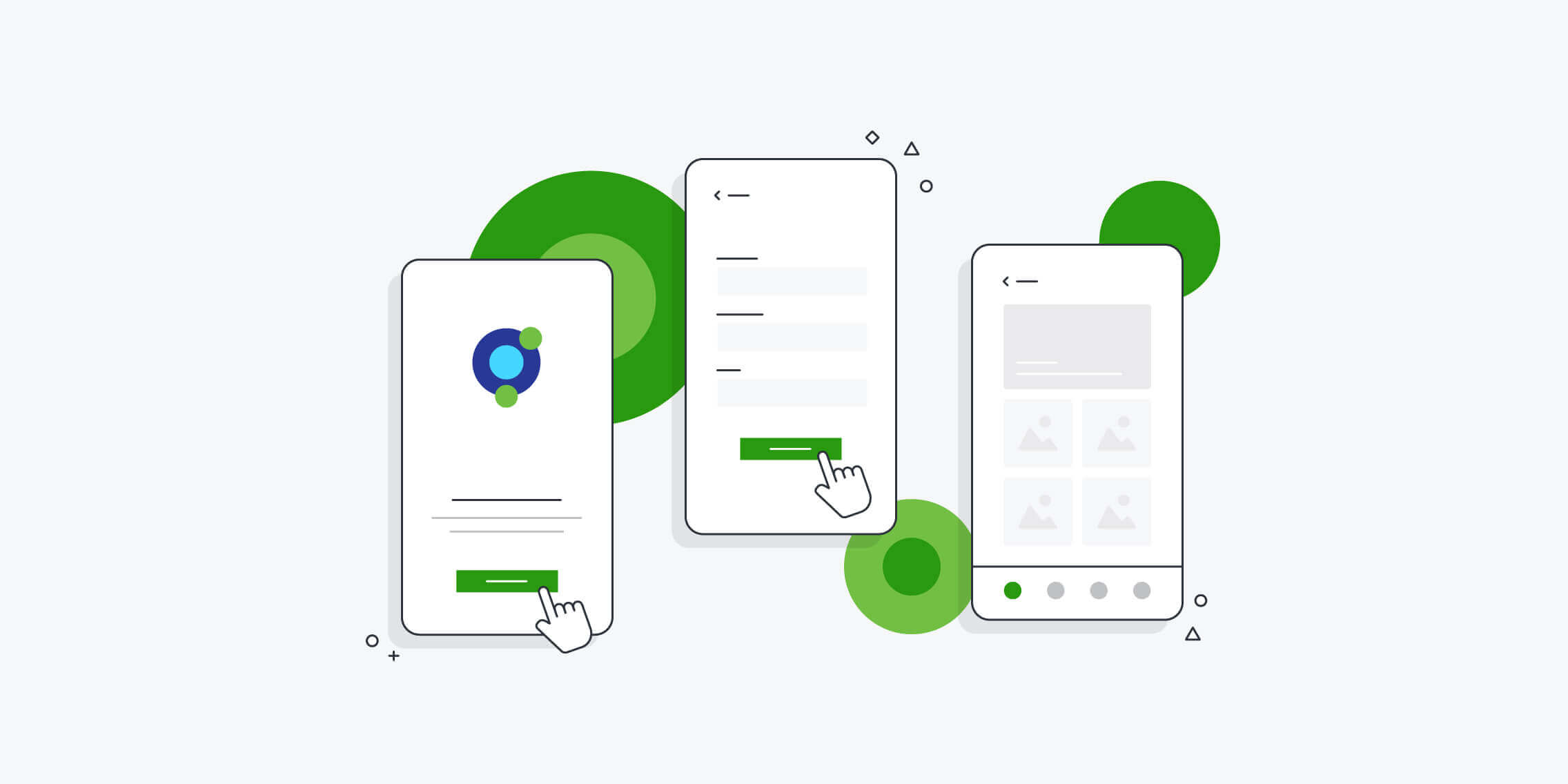How often do you meet clients so inspired by an idea that they can’t wait to start development right here, right now? They are passionate about their project and driven by a natural desire to see the final product as soon as possible. Hence, they constantly push the entire management and development team. And this may seem logical – start earlier, finish sooner; what’s the point of fighting the moonlight?
However, in software development, the primary role is played by preparing the project itself. It is the Project Discovery Phase that is crucial for successful development. After all, if the product doesn’t meet the market demand, it won’t matter how well it is made.
Starting work without proper planning is like putting together a puzzle without having a picture of what needs to be done. Of course, all the pieces will fit in the end, but how much time will be lost? As many developers confess, in almost half of such cases, the development process goes beyond the original financial and time limits, while the result leaves much to be desired. And all because the starting stage was conducted carelessly or even skipped in order to start work on the spot.
The better you prepare for the project, the more likely it will go smoothly. Although it will delay the launch, it is undoubtedly worth it. This preparation is the Project Discovery Phase. Let’s understand what goes into it, and what depends on it.
FUNCTIONAL VS NON-FUNCTIONAL REQUIREMENTS: MAIN DIFFERENCES & EXAMPLES

What Is the Discovery Phase
Usually, the project life cycle includes the following stages: initiation, planning, execution, control, and completion. Of course, the better groundwork you provide for the project at the initiation stage, the smoother the path your team will be able to take later on.
The Project Discovery Phase is the planning phase of project initiation, when team members gather information about the project, determine a budget, and form precise project boundaries. The purpose of the discovery phase is to be able to make data-driven decisions and reduce all risks associated with product development.
This includes gathering and analyzing information about the project, its target audience, scope, and objectives. This phase also examines additional information related to the development process, such as primary and secondary functions and measurable performance.
The Discovery Phase can last from a couple of days to several weeks, or even months, depending on the project’s complexity and scope of work. The Discovery phase is usually placed in the first sprint in a modern Agile management system. It helps to determine how well the software development team and business owner understand each other from the beginning.
OUTSTAFFING VS. OUTSOURCING VS. MANAGED SERVICES: DIFFERENCES AND BENEFITS
What Happens in the Project Discovery Phase?

HIRING A DEVELOPER FOR YOUR BUSINESS: A SIX STEPS GUIDE
The Step-By-Step Process of the Product Discovery Stage
In the Discovery Phase, it is important to follow a consistent algorithm of actions; modern Agile management framework helps the team in this. If you follow it steadily, then the software development project will become a predictable and pleasant activity for the client, just as a house is built quickly and smoothly according to the drawings of an experienced professional architect.
SHOULD YOU HIRE APP DEVELOPERS NEAR ME OR OUTSOURCE OVERSEAS?
It’s worth talking to clients first, finding out what they already have in their pockets. They may have already done user research themselves, have a software development team but not enough people to manage all the processes. Or, the customers just came in with an idea and very rough budget, and all these “floating” elements need to be put together with a directive strategy that turns into a rock-solid roadmap. So, how do we start project discovery checklist?
This step helps determine the main problem you want to solve with the software. Based on this, decide who will be the primary contact person on the implementer’s side.
The first phase of the Project Discovery Phase involves discussions with the founder or owner of the product. The survey method gathers as much information as possible about the vision and future product, its goals and business needs. The data is then passed to the executing company’s internal use to move on to the subsequent phases.

WHAT TECH STACK TO CHOOSE FOR YOUR PROJECT
This list should include product owners, project managers, administrators, end users, developers, investors, and any other categories involved in creating or using the finished product.
Determine who serves as the key facilitator. Provide the manager with any current information or documentation about the project. This person decides what is missing and what is hindering the project.
The project manager, business analyst, and account manager lead in the discovery phase. Sometimes they may be joined by developers and designers. They help with SRS, prototype wireframes, or scope estimates.
The project management role during the discovery phase of a project is extensive, from planning and organizing internal meetings and recording all the details discussed to ensuring productive interaction between developers and the product development team on time and within budget.
PROJECT MANAGEMENT FOR SOFTWARE DEVELOPMENT: THE APP SOLUTIONS TIPS
Prepares the project’s usage scenarios and requirements, goals, and target audience. In addition, he/she will be responsible for researching the product’s niche, competitors, and customers. The business analyst decides whether the product is needed in the market as the customer sees it, and whether to make any changes based on the collected analytics.
During the Project Discovery Phase, the developer keeps track of what technologies and languages need to be used, suggests alternative and more appropriate ways to approach the development of core features, or notes the lack of implementation. This person is responsible for creating the architecture and logic of the future software project.
Responsible for creating user experience aligned with project goals: user-friendly navigation, intuitive design, and visually appealing design. Creates sketches, mockups, wireframes, and prototypes to bring the vision to life.
QUALITY ASSURANCE AND SOFTWARE TESTING FOR MOBILE PROJECTS AT THE APP SOLUTIONS
Sometimes gets involved in the discovery process to explore possible problems in the execution phases of the solution.
Selecting such a team and having them work together allows for more than a short list of business and technical requirements and estimates during the Project Discovery Phase. In addition, it provides an incentive for customers and performers to work on the same wave, without asynchrony, as all participants get a holistic view of the project as a whole and, in particular, why a specific feature is needed.
HOW TO OUTSOURCE MOBILE APP DEVELOPMENT

Developing successful software projects requires a complete understanding of the target audience. A market analysis studies its size, amount of competitors, financial and technological features, and trends. The data collected takes into account the needs of the stakeholders, as well as the needs of the product’s end users and competitors’ experience.
Building the user journey and defining the target audience will be vital in creating the product, as it enables the formation of effective marketing strategies. This requires the software development team to analyze how, when and under what circumstances the intended product or solution will be helpful. For example, what will make a user visit a particular site or download a mobile app?
The virtual portrait of the target audience includes information about the likes and dislikes of users, their hobbies, professions, and much more. In addition, we identify the problems our users face and find ways to solve them with the product. Finally, using information from user feedback, we modify the initial plan to reflect real users’ expectations, needs, and pain points.
Through market research, we can understand what the industry is doing concerning similar projects and adopt market best practices. Ultimately, this helps us set realistic expectations for the project, create valuable benchmarks, and calculate the time and cost required to develop a full-scale product or MVP, bringing us to our next point.
Looking For A Tech Partner?
Drop us several linesHOW MUCH DOES IT COST TO DEVELOP AN APP: DETAILED FEATURE BREAKDOWN
Once you understand the competition better, it is time to work on the product specification. At this discovery stage, we form a product requirements document including software requirements – design details, recommended tech stack, feature set, architecture description, and so on.
This document will ensure that development goes smoothly; the product requirements document lists all the planned features and functions. In addition, requirements development defines the complexity of a given functionality. This establishes the effort required in the design, development, testing, and project management phases.
In this step, the information architecture is also developed. It helps to outline the essential elements, how it should all work, what roles exist, what functions you will have, and how they should relate to each other.
Based on the information gathered during the sync of all the participants, the development proposal helps ensure that the project discovery team will create a product that meets all of the client’s requirements and expectations. It also clarifies the project vision and minimizes entire project development risks.
HOW TO MAKE AN APP: LIFE CYCLE OF MOBILE DEVELOPMENT

After forming a product requirements document, we start working on an interactive prototype. Simply put, this is a model of a particular piece of software that functions just like the final product. It helps to test functional assumptions and identify potential technical problems. In addition, a prototype model helps the software development team better understand the project, and you can focus on improving the user experience up front.
A prototype is a demo version of an application design based on a technical specification. It represents how the application should work, not the visual components. It is an integral part of the discovery phase of a software project.
UX/UI-rs work on the project’s design concept and visual representation in the form of mockups or prototypes. Creating clickable prototypes is considered good practice for thinking through how critical features work.
At this stage, developers choose which programming languages, frameworks, and services will be best for the project’s success. They can compare what will work best for certain product parts or think about which web application architecture will be most efficient, saving time and costs.
FEATURE PRIORITIZATION FOR THE PROJECT’S MVP
The ultimate goal of preparation is to reach a stage where the discovery team can give an accurate estimate of the time and cost required to create the MVP or full-scale product.
This stage includes finalizing the team’s composition, key milestones, and the likely timeline for each step. Based on these, you can create a timeline and calculate the approximate total cost of the project. Ideally, you also map out the project’s success.
Another essential document that the discovery stage leads to is a complete project schedule with specified milestones, deliverables, and timelines.
When the discovery team relies on a clear set of requirements, they can accomplish every task of the development phase without any postponements or changes. All those responsible know the intermediate project goals, deliverables, and deadlines. This is the bottom line by which you can move forward with confidence.
HOW COLLABORATIVE LOGISTICS SOFTWARE IMPROVE SUPPLY CHAIN VISIBILITY
Benefits of the Project Discovery Phase
Project Discovery Stage gives confidence in the stability of the project thanks to the following:
-
In-depth niche market research allows you to make decisions based on data, not assumptions. It’s about more than just the proven usefulness of the product but also about refinements based on feedback from potential users.
-
A clear framework for the project’s cost at the very beginning due to the strictly defined goals and phases of work avoids surprises. The price is not subject to change at each new stage. In such a situation, finding investors is much easier.
-
Saving the customer not only money but also time, avoiding the need to make costly edits in the final stages of the project.

Collaborative work at the Discovery Phase provides a lot of opportunities and avoids misunderstanding and other unpleasant moments, among which:
-
A vague idea. Sometimes customers come to development companies with a vaguely formulated project at the idea stage, and the client needs help understanding how to implement the project. What business processes should accompany it, what stack and features the final product will have, and what can be limited to the MVP stage? And finally, does the target audience need the potential product? Without detailed elaboration of all the nuances “onshore,” you should not start “sailing.” In the next step, there will be questions, problems, miscommunications, and inconsistency of expectations and results.
-
An undetermined amount of work. Suppose you do not prescribe each step in advance (what should go after what, what is a priority, what can wait, what is the logic of importance). In this case, the amount of work will constantly change, missing deadlines will be revealed, and implementation will be greatly delayed.
-
Uncertain budget. This comes out of the previous step. If there is no clear roadmap, the duration of work and goals are constantly changing (upwards), which means the funding costs will also change. Sometimes budgets get so bloated that it’s easier to drop the idea.
-
Forced downtime. The steps depend on each other, so if you break one of them, it can stall subsequent efforts. Without clearly defined steps, regulations, policies, and technical documentation, you can’t just change the development team you’re unsatisfied with because no one from the outside will want to get into the mistakes of others; it’s better to start from scratch. So the client also wastes time looking for a “rescue” team and concludes that beginning with the Discovery Phase is necessary.
-
Unsatisfactory result. If all the stages of work were done ad hoc, and instead of developing a quality product the team was busy “fighting fires” because of mistakes, it is hard to imagine that the product will be good, in demand, and meeting the expectations of the client and end users.
A carefully planned Project Discovery Phase usually takes about 10% of the total duration of a project. So, as you can see, it is not as much as may initially seem, and the benefits far outweigh the costs.
INCEPTION PHASE OF SOFTWARE PROJECTS WITH THE APP SOLUTIONS
The Bottom Line
It is important to understand that the Discovery Phase is not a whim of a development company trying to get as much money from the client as possible. On the contrary, by going through this process, the customer gets a predictable roadmap, in terms of time/stack/finances, for working on the solution. Furthermore, they may save a lot of money through getting market research which confirms that the game is not worth the candle, and the idea abandoned without investing time and resources.
We have our own SWAT at The APP Solutions, who will quickly guide you through the Discovery Phase – we will answer all the questions of interest, give an estimate of the cost and duration of the project, as well as what you can do to improve your product and much more. So contact us if you want a quality analysis and guidance for your idea in the shortest possible time.
Already know what project want to do?
Calculate the Cost